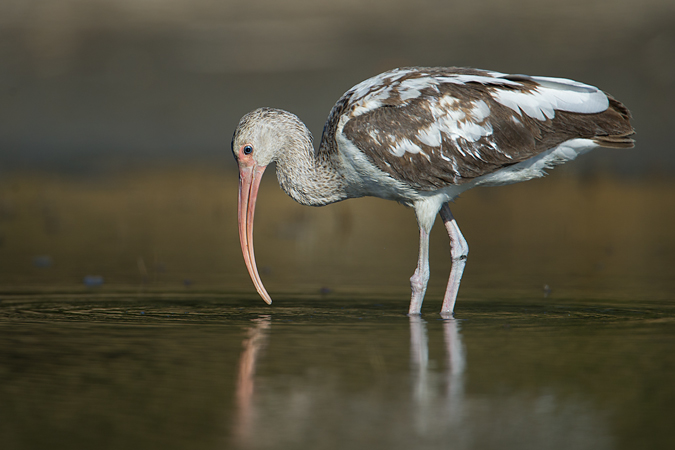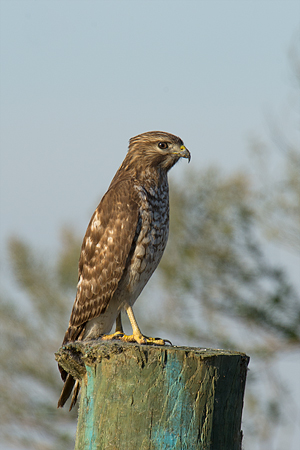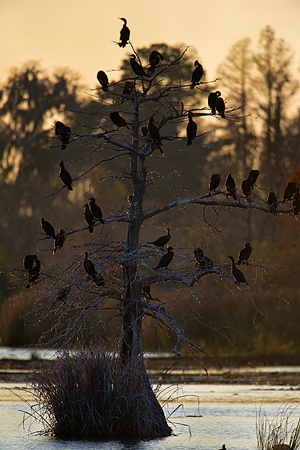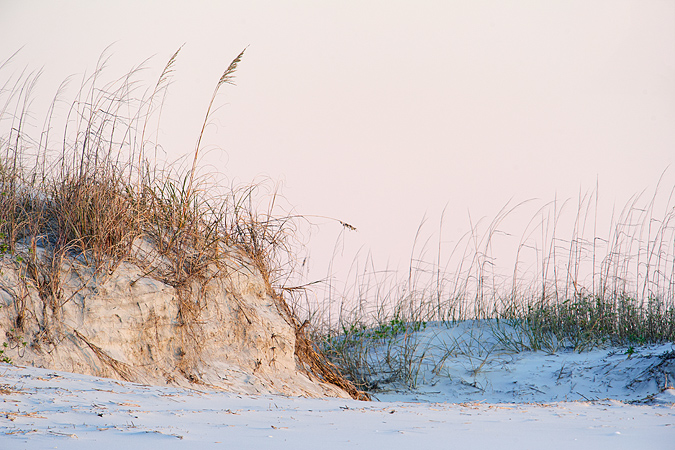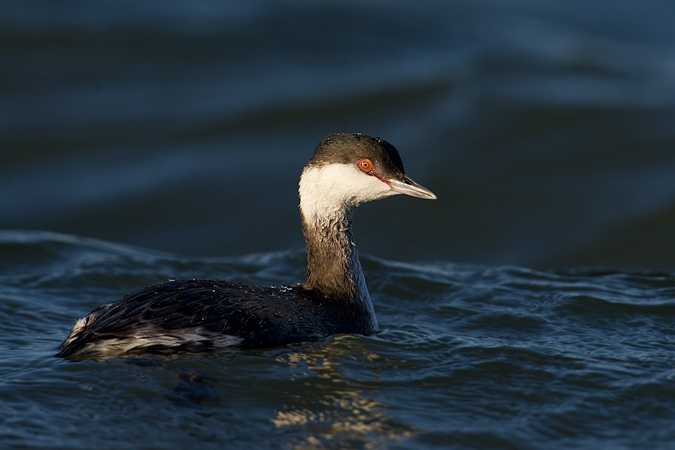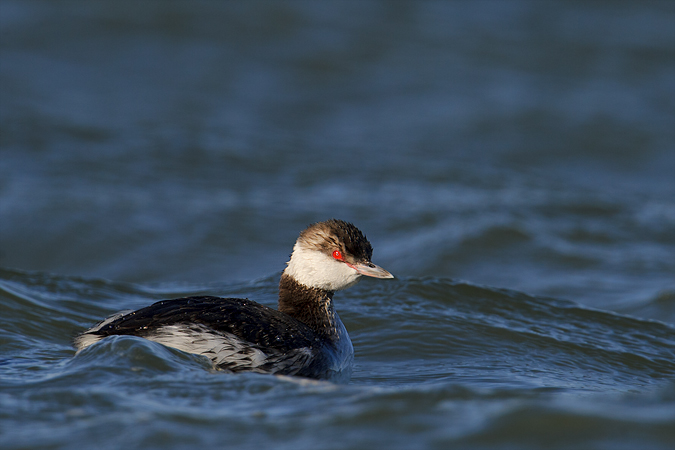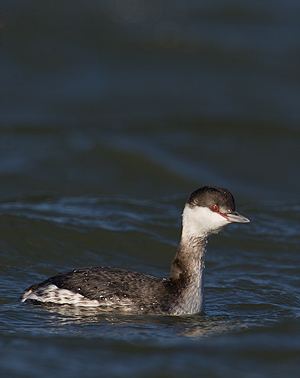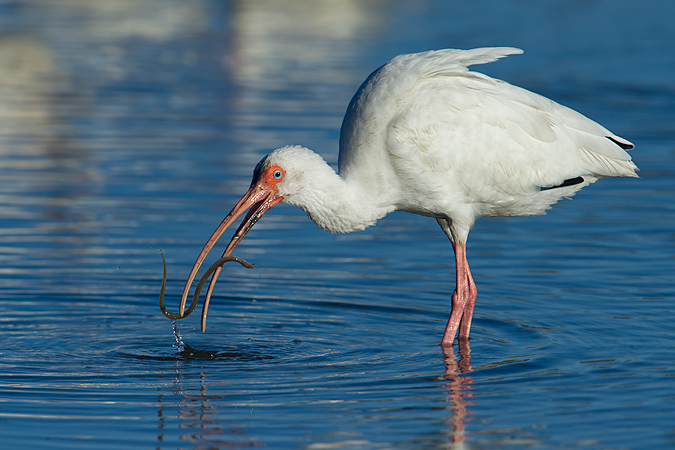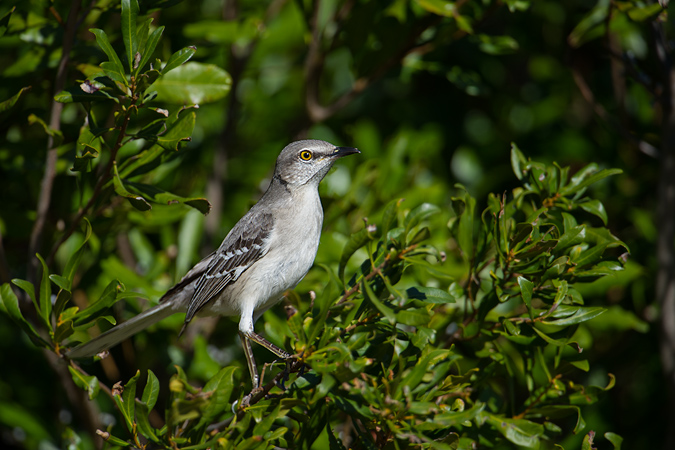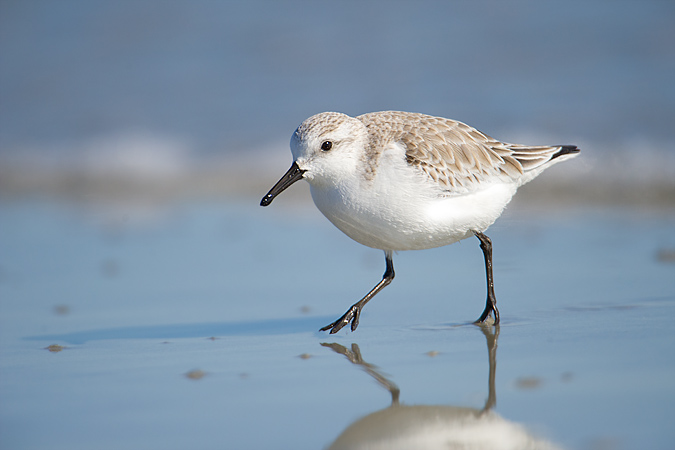Ducks back here in South Carolina continue to be my nemesis. I went out looking for some early this morning and found a few Buffleheads and a male Hooded Merganser who was leading around a trio of females. So I settled into the bank of the pond and waited. I got a lot of practice at waiting but nothing else for my effort. On the walk out I ran into an immature White Ibis that was feeding as the tide came in. Adults are brilliant all white except for black patches under the wing tips. Juveniles start out all brown. As they grow up, gradually some white feathers begin to fill in. In under two years they’ll achieve the full adult plumage. This one has a while to go.
Often when getting back from a trip, you’ve got behind on so many others things that you feel like you need to take time to catch up. That’s all good, but this time I was going to make sure that I still kept shooting. I’ve been spoiled the last couple weeks with cooperative wildlife wherever I went. Every streak ends some time and luck caught up with me today. A whole afternoon searching for wildlife that was photographable and the only thing I could find was a young Red-shouldered Hawk and the hawk was on a very unattractive dike post.
I kept trying to no avail all afternoon until the light left me. As the sun went down, I headed over for a sure thing. There’s a dead tree out on the water that the Double-crested Cormorants always come to roost at the end of a winter’s day. With the luck I had had today, maybe today would be an exception. Fortunately they were there today. It was fun being out today, but still I hope Scarlett is right about tomorrow.
As always, Huntington Beach has been so much fun. So much fun that the 4 nights I spent here went by before I had realized. I had one last morning to get some photography in before the last few hours of driving home. I had a plan in mind. The last couple of days I watched the Horned Grebes enough to learn their behaviors. I also felt like I had a good chance at getting some good photographs of this species. But the approach required the morning, and today was the day to try. This meant walking the long walk down to the jetty with my gear. As the light started to come, the sand dunes began to awake with all sorts of pastel shades. Although I usually use my long lens for birds, this time it seemed appropriate to turn it on the landscape.
When I made it down to the jetty, I crawled out onto the rocks. Temperatures were somehow below freezing this morning. I saw flurries a couple of times in all my days up north, but now I’m in South Carolina and there was ice on the ground – amazing. If you think the air temperature is cold, lie on wet rocks a couple of inches off the ocean surface with strong winds blowing in your face. To say today felt cold was an understatement and I was dressed for a cold day. After about 20 minutes of frigid nothingness, a big group of horned grebes moved close to where I was on the rocks. I quickly forgot the discomfort as I focused on these bizarre birds.
The grebes were non-stop diving. They would come up for about 10 seconds of breath and then dive again. They were catching fish, shrimp, crustaceans – not sure exactly what. But whatever it was the Bonaparte’s Gulls also decided to join in. Unfortunately the jetty runs east-west so I couldn’t really get a perfect angle on the grebes, but I did the best I could with the light. The Horned Grebes never ceased to amaze me with the way their heads could change shape so dramatically. This one looked faintly devilish to me.
You may have noticed that in all my photos the grebes are facing the exact same way. With the strong wind and the grebes fishing from the deeper water to the shallower water, they all were facing that way virtually all the time. On top of that only a few of the birds came close enough to the rocks for photographs. I was happy even to get a bird with a body angle turned slightly towards me like this one. I definitely need to make it back out to these birds for some more variety in the images not to mention that their breeding plumage and behavior is fantastic.
And just like that the morning was gone. My fingers were gone too – or at least I couldn’t feel them. It was time to head home after a wonderful trip with lots of fabulous landscapes, birds, and even foxes. As I was walking the mile or so back down the beach, a few pelicans were diving far off into the water. It was a backlit situation, and I usually like back light when the sun is on the horizon, but something told me to stop and shoot. I decided on a silhouette, something I usually only do with the colors of a sunset. But there were some great clouds and the wind was creating chop on the water. I didn’t quite get what I was going for with the shiny chop, but silhouettes against the cloud worked nicely. After all these days on the road, I’ve forgotten what home feels like!
When people see you in the field with a 600mm they think that you can bring the freckles of person standing on the moon into view. I wish it was the case. A long lens is a great help, but you still have to get fairly close to wildlife for most photographs. This morning I tried again for the ducks on the freshwater at Huntington Beach State Park. I tried for longer than yesterday, but again the ducks just did not come in close enough for photographing. So towards the end of the morning, I took my licking and moved on to the saltmarsh. There were quite a few White Ibises foraging along with a Clapper Rail and a Great Egret fitted with a radio transmitter. I took a bunch of solo shots of individual birds, but my preferences gravitated towards images that showed that these birds feed in flocks.
The ibises fed for quite a while. There lots of chances for different types of photos – flight, portraits, environmental, and different behaviors. When opportunities like this come along, you can bet that I am not going to move! I was amazed when one of the ibises pulled up a young eel from the saltmarsh. I wouldn’t have been as surprised if it was a heron, egret, or stork – the eel would be a common food item for them. But with the ibis, it was a special treat.
After the saltmarsh, I tried to round up some songbirds. Once again it was the reliable Northern Mockingbird that cooperated. This time it was perched in an attractive bush. From looking at the photo you might think that the mockingbird is several feet up at about eye level. In reality, the mockingbird was maybe 8-10 inches off the ground.
For the afternoon, I took the long walk down the beach to the jetty again. I stopped for a while in the sand with some Sanderlings again. They’re just too cute! Sanderlings will run down to the water’s edge when a wave recedes and then race back away from the water when another wave comes. They do this so they can feed in the sand that was wet a second ago but is freshly exposed. This little one was running back to avoid an incoming wave.
The jetty didn’t have as much going on as yesterday, but there were still a few good birds out there. This Common Loon gave me a few wing flaps to straighten its feathers out after a long dive.

